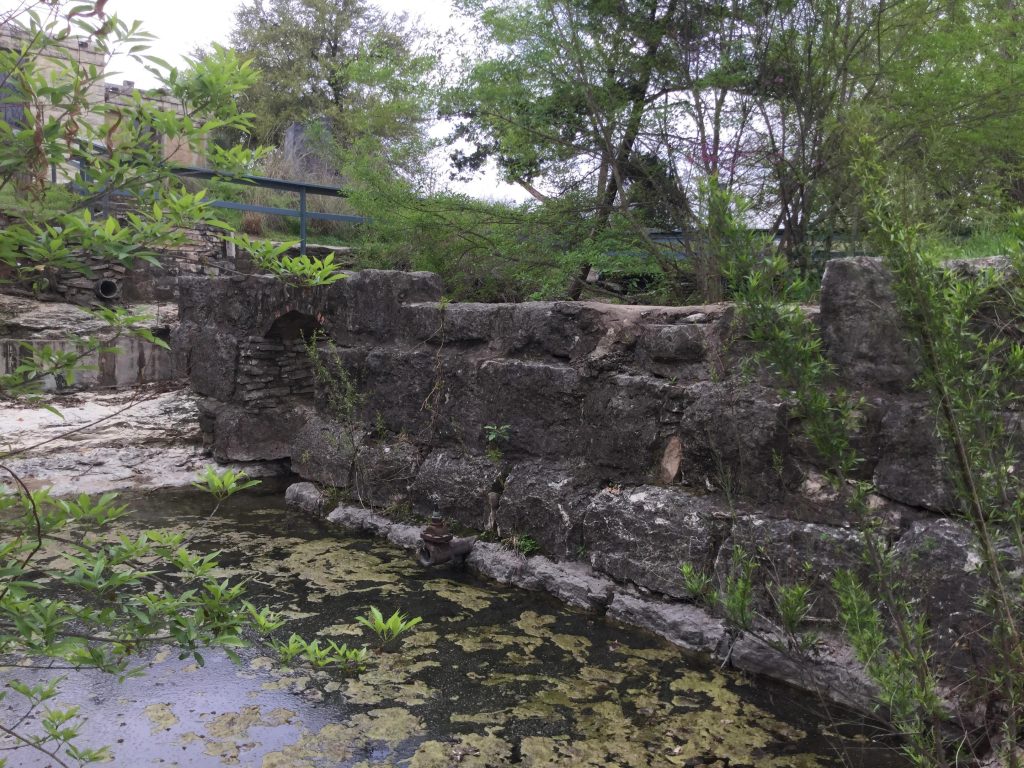The Mysterious Lake Ney Dam Along Waller Creek

Along Waller Creek, you will find an 8-foot-tall masonry dam on the Elisabet Ney Museum property in Austin, Texas. Little was known about this dam until the American Society of Civil Engineers (ASCE)-Texas Section was called upon. Laura Esparza, Cultural Affairs Division Manager for the City of Austin’s Parks and Recreation Department, turned to ASCE Texas Section’s History and Heritage Committee to help date the dam and provide any supplemental information regarding the dam. In the typical style of civil engineers, the committee was eager to serve as a resource. Committee members scheduled a site visit and began pouring through news articles and historic documents.
At the Austin History Center, several articles and books indicated the dam was in place at the property when construction started on the Ney Home in 1892. This places the dam at least 126 years old. So, who built it? When did they build? And, why?
Let’s start with the research. Most early maps do not show anything north of The University of Texas at Austin because this area was considered far away from town. For example, early maps such as Sanborn Fire maps and Birds Eye View maps do not show this area. Other maps, such as topographic maps, don’t show enough detail to see the dam. Looking back in The Water Power of Texas written by Thomas U. Taylor and dated 1904, about 150 dams were inventoried in the state. Since that time, most have been washed-out or abandoned. Of those, approximately 10% were built of stone such as this one at the Elisabet Ney Museum property.
The committee agreed native limestone was probably used during the construction of this dam because of it’s availability. As a side note, the committee’s research indicated this particular dam survived at least nine sizable flood events in 1896, 1900, 1915, 1935, 1981, 2001, 2002, 2015, and 2017.
At the first site visit, the most puzzling aspect of the dam was an archway partially made of red brick along one end of the dam. The dam measures approximately 40-ft wide, spanning across the creek. It varies in height because of the notches at the top. These observations led the committee to further their research into the dam’s construction timeline.
The committee reviewed hundreds of newspapers. An article in the Austin American Statesman dated July 2, 1891 stood out. The article referenced an 8-ft dam in northern Hyde Park, being built by the military to pond water for the company that would camp in the area to complete military exercises, coming from Fort Sam Houston, a US Army post in San Antonio. Fort Sam Houston’s Light Battery F is noted as the group who built the dam.
This practicing of military maneuvers in north Austin eventually led to the decision to establish Camp Mabry as a permanent military installation. The soldiers stationed at Fort Sam Houston reportedly built a number of buildings, roads, and structures in and around the fort. The first engineer at Fort Sam Houston was Major General Edward Ord, a West Point-trained engineer. He trained a number of soldiers to help him build various military posts.
Uncovering the military’s construction of the dam at the Elisabet Ney Museum property is rare. Not many dams built by the military have been documented in Texas. Dr. Alan Skinner of AC Consultants, a firm specializing in historical studies, agreed that the dam would be dated in the late 1800’s.
Chronicled through several other articles in the Austin American Statesman, the archway’s history was also identified. As the committee expected, based on building materials, the archway is not original to the dam. The articles also revealed how beloved the dam was to Elisabet Ney. It was clear she appreciated the nearby water as a resource, naming it “Lake Ney”. She even reportedly rowed her canoe in the lake.
The City of Austin hopes to preserve the dam, realizing it is a great civil engineering landmark – one that provided a reliable source of water for early pioneers. Preservation Texas, a private, nonprofit member-supported organization dedicated to protecting the historic resources of Texas, specifically named early dams as an area that needs attention. More work needs to be done to update the inventory of historic dams such as this one in Texas. Through this research, the committee noted hundreds of dams that were built prior to1904 of which only a handful still remain intact today.
ASCE Texas Section’s History and Heritage Committee plans to continue their research into the Light Battery F of Fort Sam Houston in hope of identifying the specific individuals who built this civil engineering landmark.
Note: The committee would like to thank Rusty Heckaman of the Austin History Center, who helped comb through the various articles, books, maps, etc. to obtain information about this dam.
Share this story:








